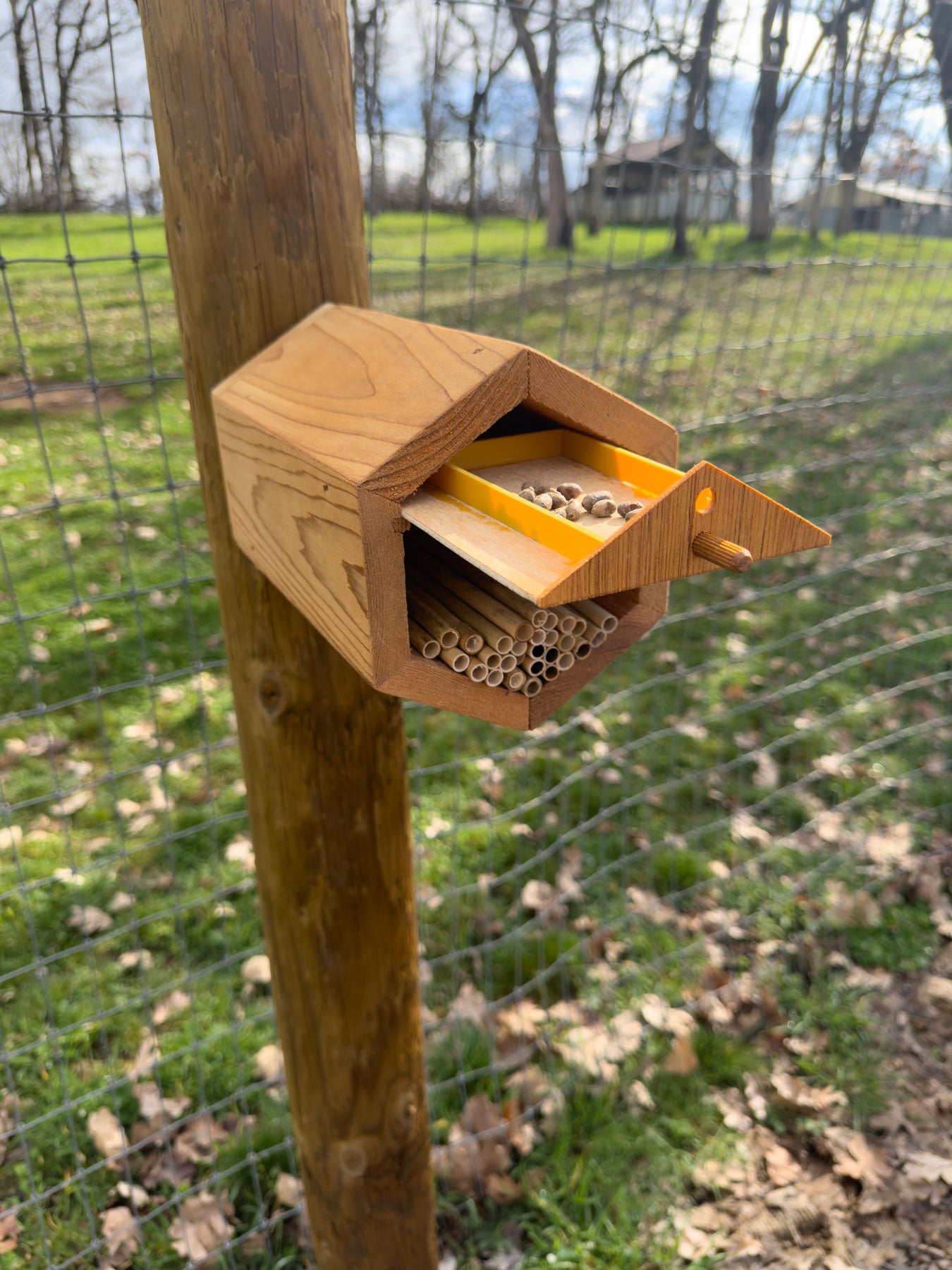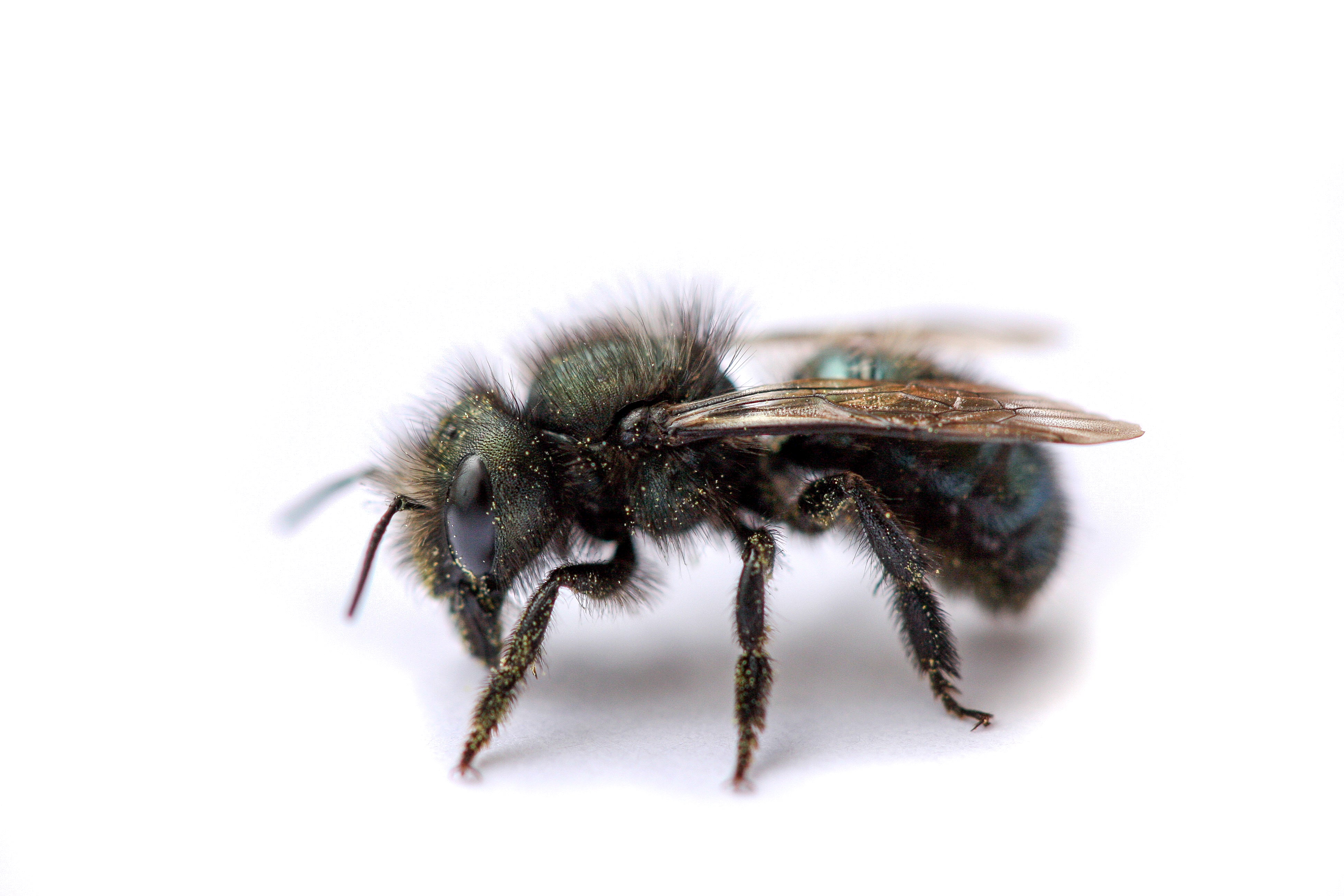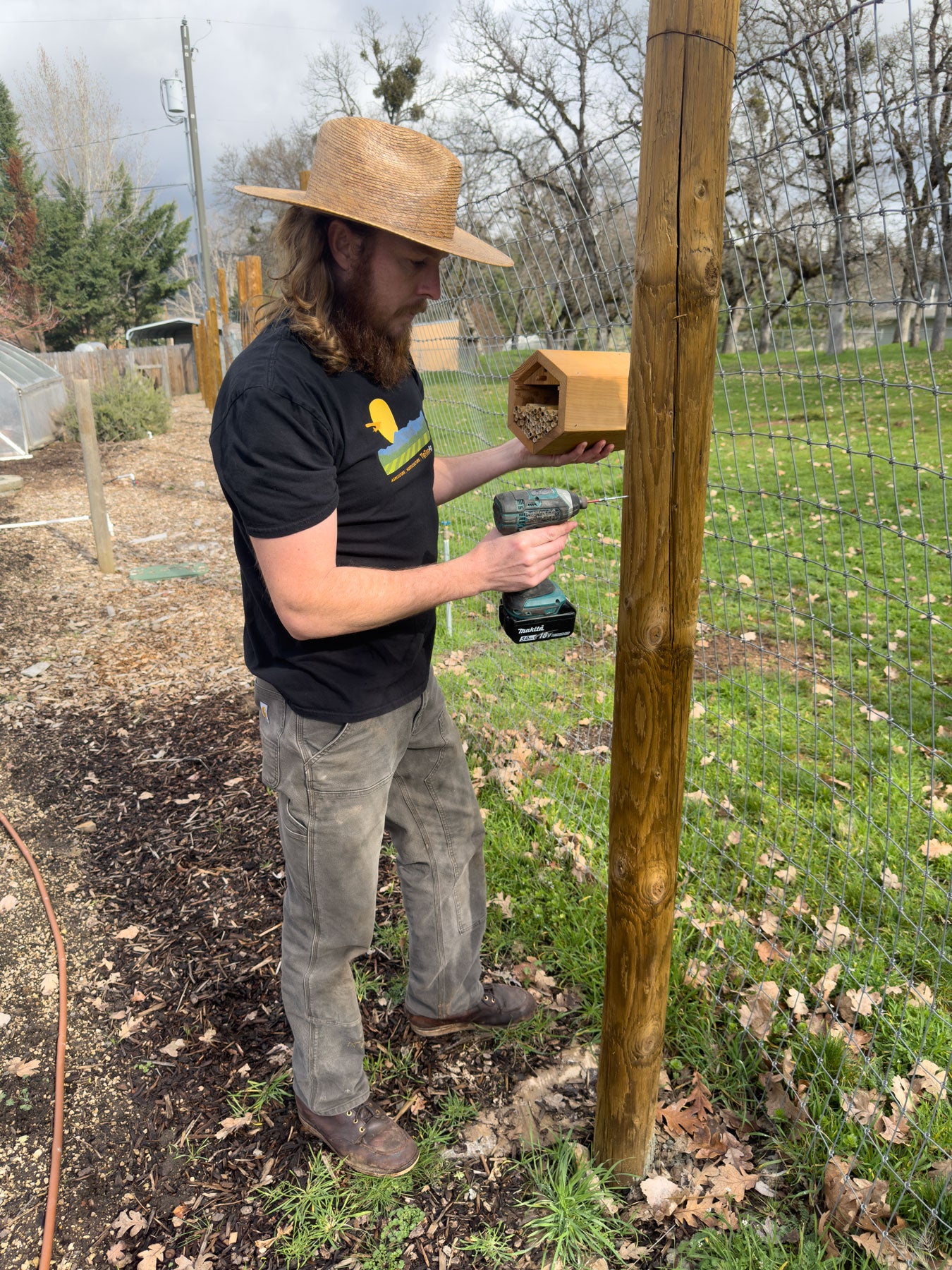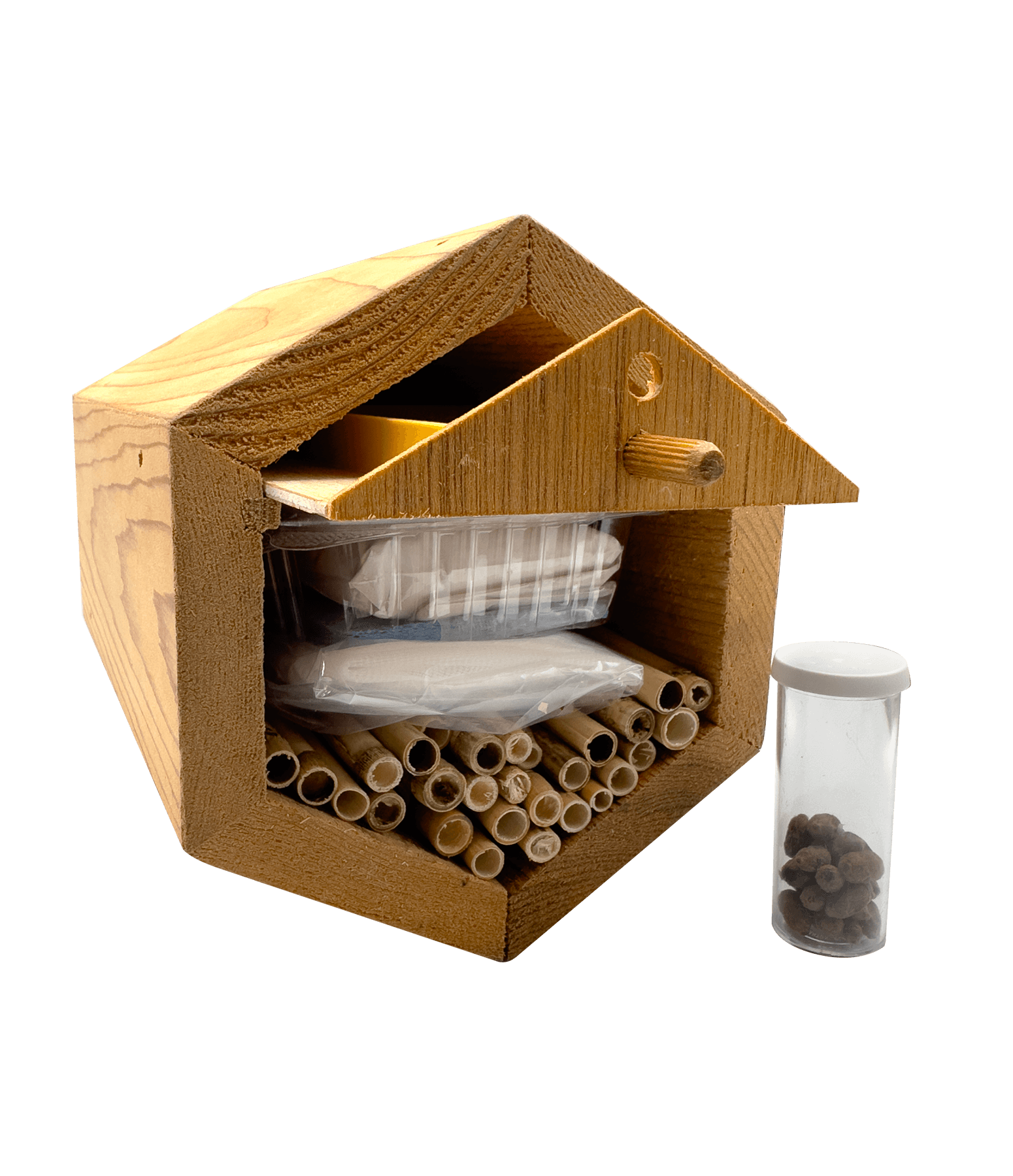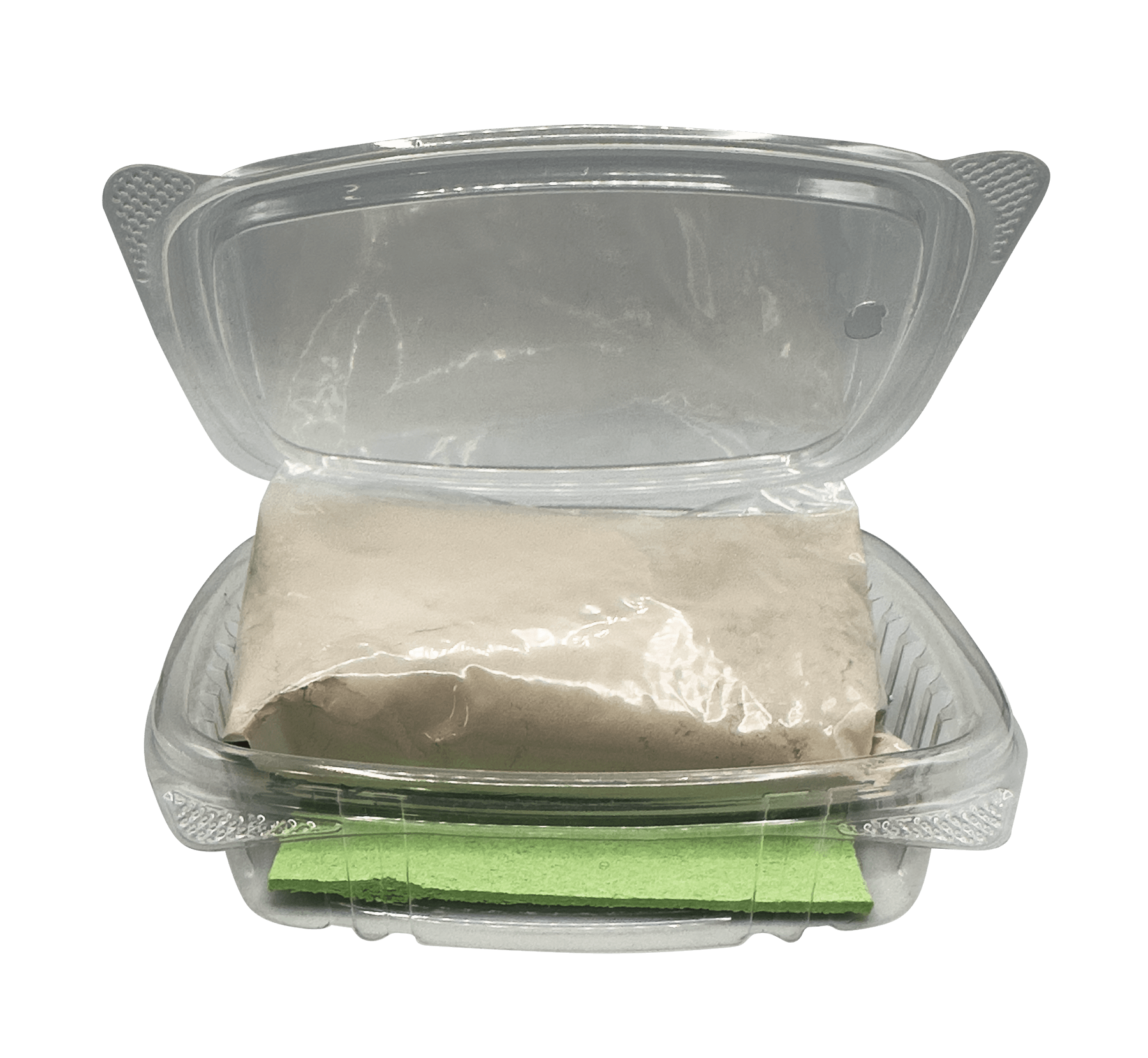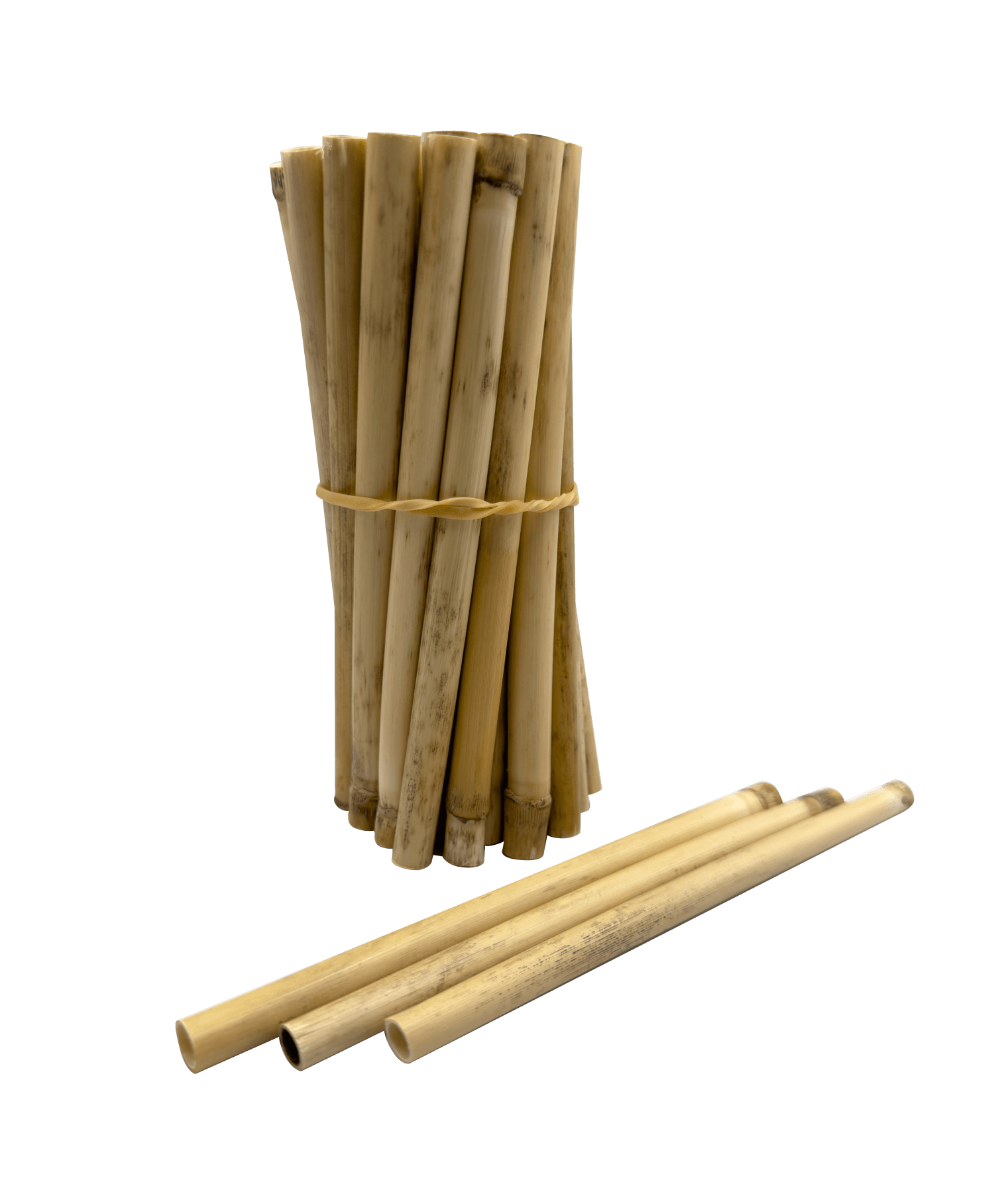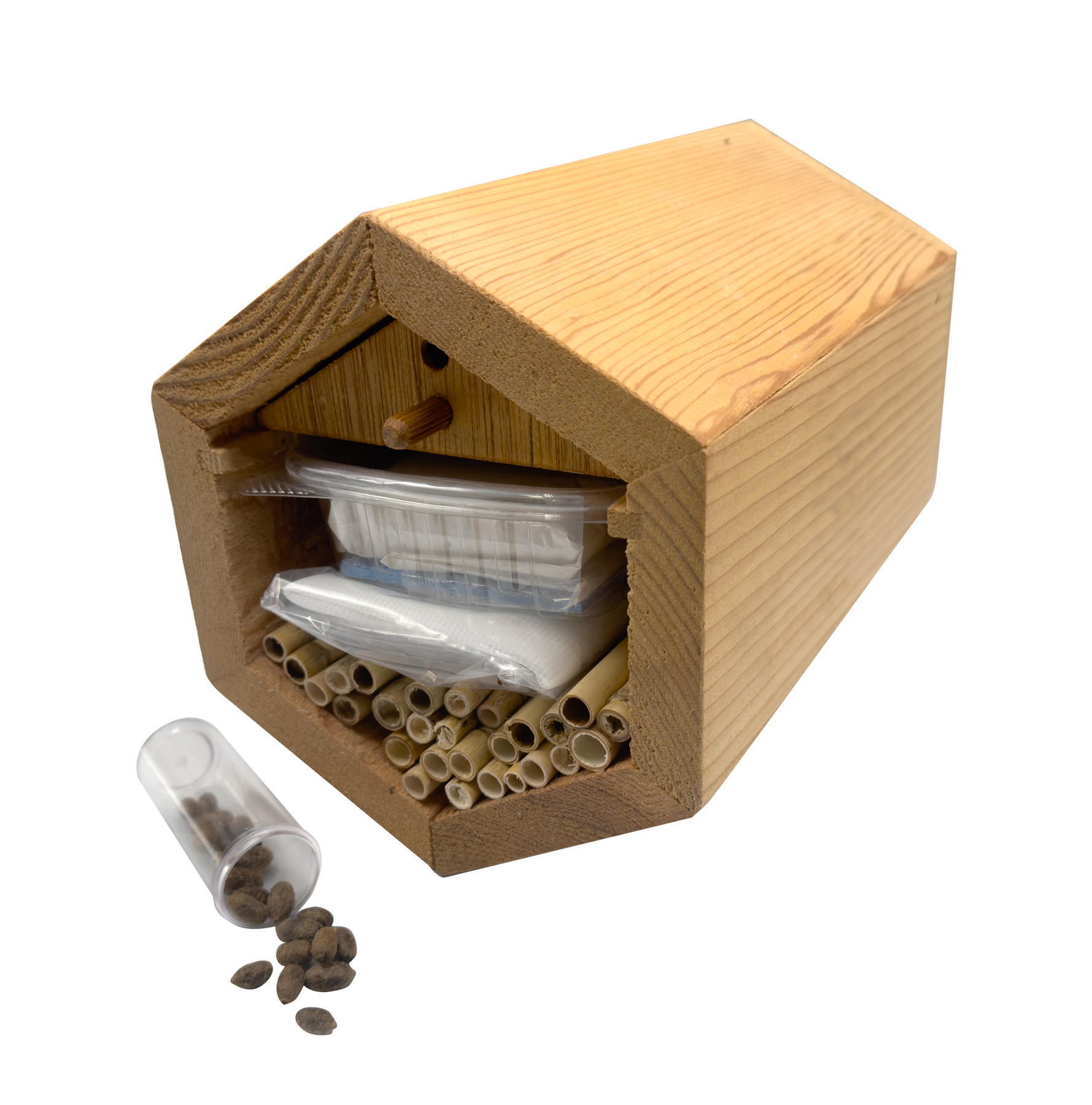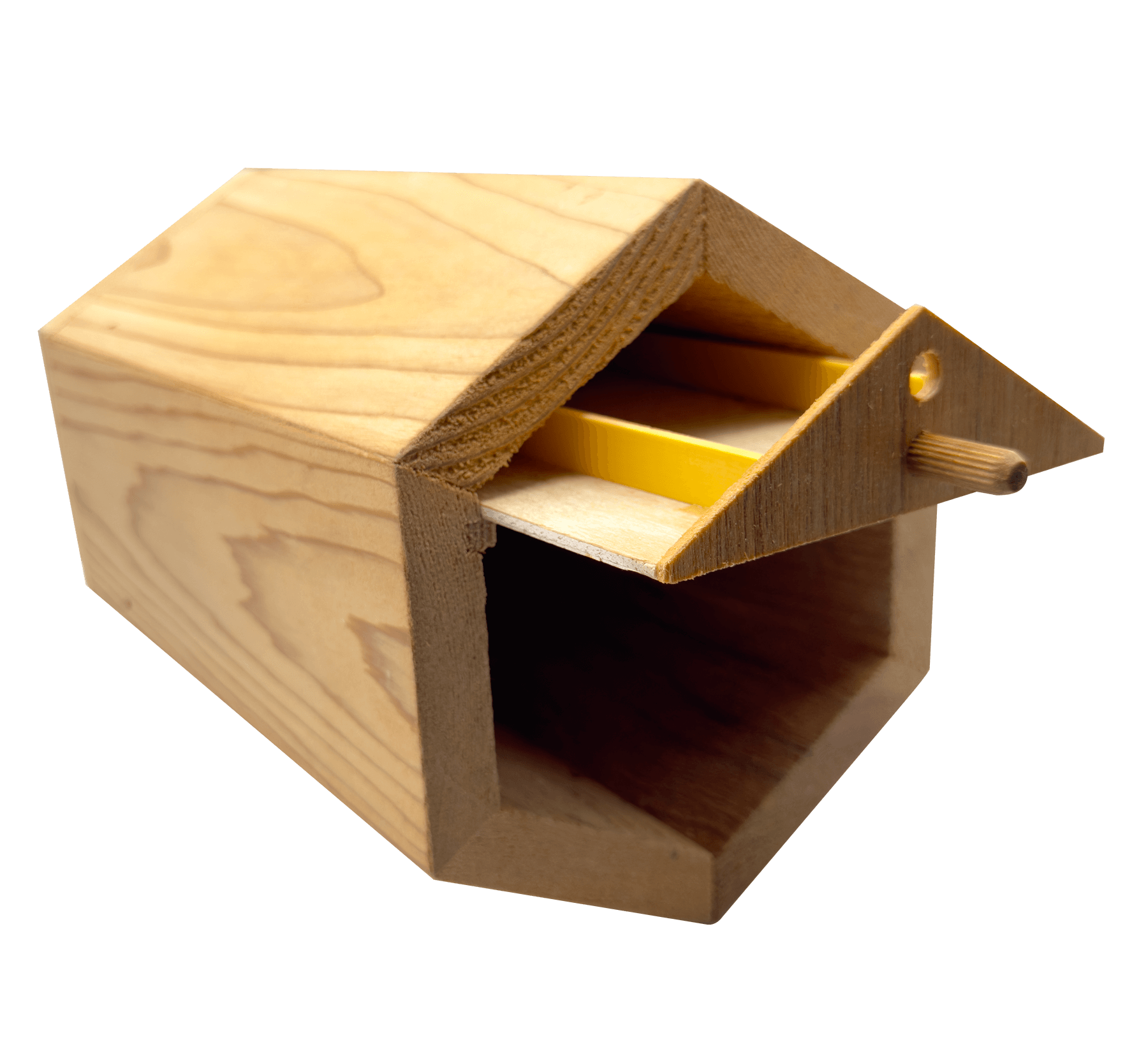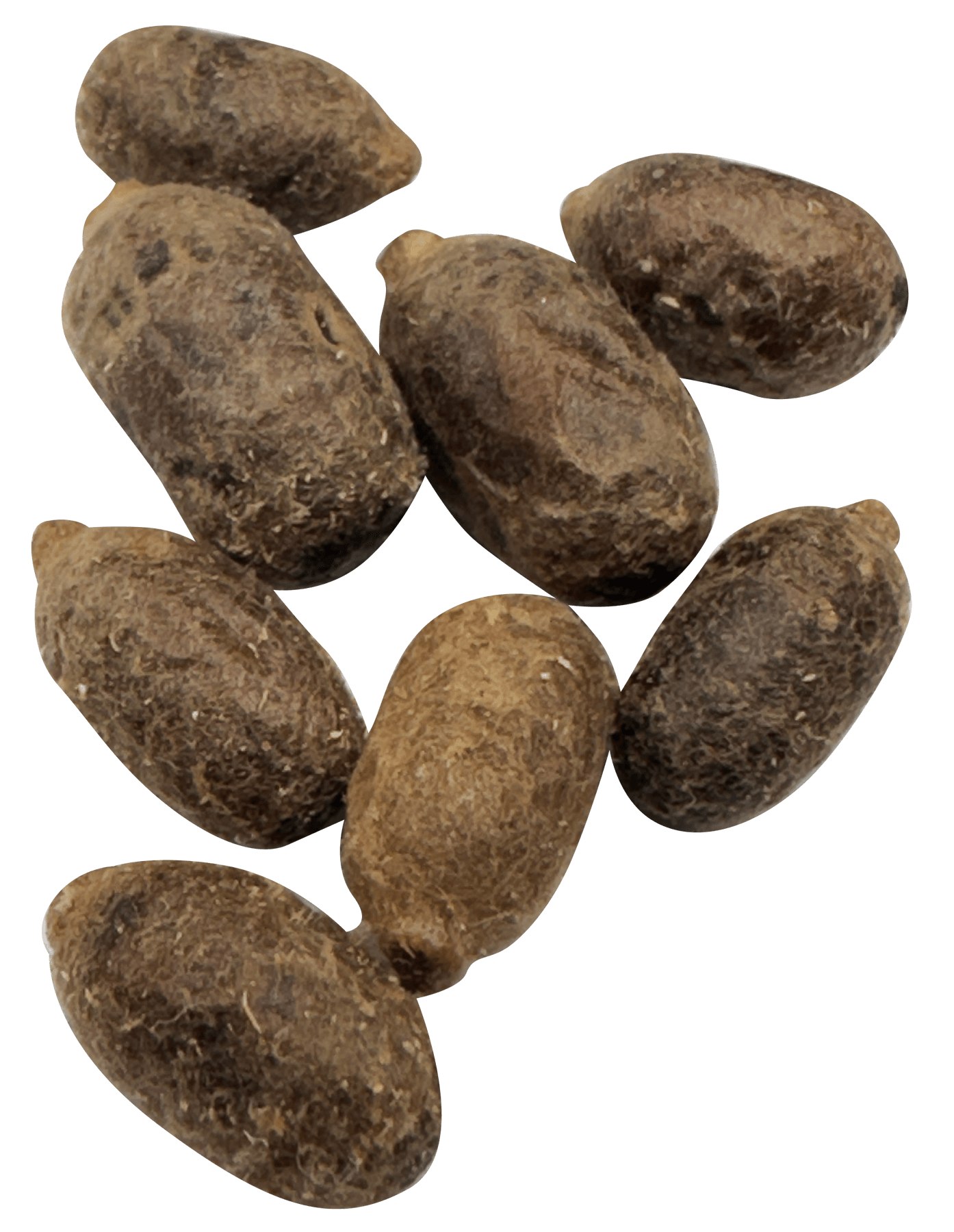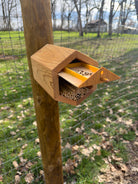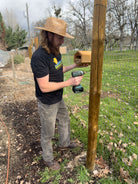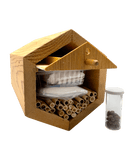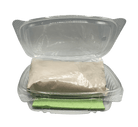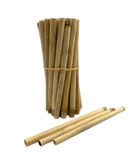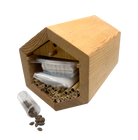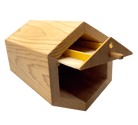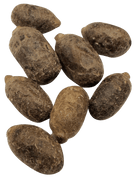Mason Bee Hut Kit
Case Count
ABOUT MASON BEE HUT KIT:
Order mason bees and release when daytime temperatures consistently reach 50-55°F. Nightime temperature lows is not important.
Mason bees are gentle, non-aggressive bees that are important pollinators for fruits, vegetables, and flowers, often surpassing the effectiveness of honeybees! They are solitary bees native to North America, and are named "mason bees" because they collect clay rich mud to build walls in between each egg. In nature, female mason bees build their nests in hollow plant stems, tree holes, rock crevices, or any small hole that is at least 6 inches deep.
Our Mason Bee Hut Kit is a simple and easy way to raise these gentle pollinators!
Mason bees are seasonal pollinators and are only available for purchase from February through May.

MASON BEE HUT KIT INCLUDES:

Mason Bee Cocoons
Protective casings where the bees develop - Included in our Hut Kit to kick-start your mason bee population. You can also purchase them separately to replenish existing colonies.

Mason Bee Cedar Hut
Made from Pacific Northwest Cedar and designed to attract mason bees and keep them safe. Its compact size makes storing cocoons in the summer easy and will last over many seasons and years. Measurements:
2in overhang to drain excess rain
Keyhole slot in back for easy installation and removal
Size: 6in H (each side to side) x 9in D

Mason Bee Mud/Nursery Hut
In the spring, this container is designed to ensure that Bee Mud is accessible by keeping it moist and preventing it from washing away.
In the fall, this container is intended to be re-used as the Nursery Hut for harvested cocoons. It is designed to keep the cocoons moist but not overly wet when placed in a refrigerator.

Reed Nesting Tubes
Natural Tubes come in different sizes and naturally repel parasites and disease. Discard used tubes and replace with fresh tubes each year.
Mason Bee Hut Bag
This bag is used protect developing bees inside the bee hut from pest infestation during the summer months when the bees become inactive.
GETTING STARTED WITH MASON BEES:
1. Find the best location:
- Locate a sunny, south-facing spot preferably with afternoon shade during the heat of summer. It should be protected from wind and rain, but allowing full morning sun.
- Placement should be within 300 feet of flowering fruit, vegetables, or flower plants. Ensure there is no nearby pesticide use or recent chemical treatments.
- The opening should face away from any birdhouses or feeders.
2. Store cocoons until ready:
- The Bee Hut and the Mud Hut should be set up and ready to go when you put the cocoons outside.
- Mason bee cocoons can be released when daytime temperatures reach 50-55°F, and when spring flowers are in bloom. Night time temperature lows are not important.
- If you received your cocoons before adequate conditions are met, store them in a fridge or cooler between 34-38°F until you are ready.
3. Set up the Bee Hut & Mud Hut:
- Place reed nesting tubes as far to the back of the Bee Hut as possible.
- Install or secure the Bee Hut on a sturdy base at least 5 feet off the ground.
- Place the Mud Hut within 25 feet of the Bee Hut, but not directly underneath.
- When temperatures consistently reach 50-55°F, and flowers are in bloom, place the bee cocoons in the wooden tray at the top of the Bee Hut - no later than mid-May.
4. Summertime protection with Mason Bee Hut Bag:
- Keep an eye on your Bee Hut throughout the Spring nesting season. Clean out any debris or pests and refresh nesting material if necessary.
- After the nesting period in late spring/early summer when the bees are no longer flying around the Bee Hut, remove the entire Bee Hut and clean off any obvious debris on the outside.
- Put the Bee Hut in the Hut Bag with the entrance of the hut facing up. Tie the bag and store in a garage, storage shed, or other cool, well-ventilated, and protected area for the rest of summer.
- Clean the Mud Hut and set aside to use as the Nursery Hut to store cocoons later in the winter.
5. Harvest in fall & store over winter:
- When temperatures fall consistently below 60°F, usually in the fall around October, it's time to harvest the cocoons.
- Set up the Nursery Hut (formerly used as the Mud Hut) with a clean sponge.
- Gently open the tubes and sort out the healthy cocoons that are brownish-gray, firm, and don't have any holes.
- Clean the cocoons by rinsing in cool water and using your fingers to remove any debris. Pat dry, and leave out in a cool area to cure for about an hour
- Store the Nursery Hut in the refrigerator between 34-38°F. Monitor frequently and add just enough water to keep the sponge moist (not wet) so the cocoons don't dry out. If they contract mold, simply repeat the cleaning process.

